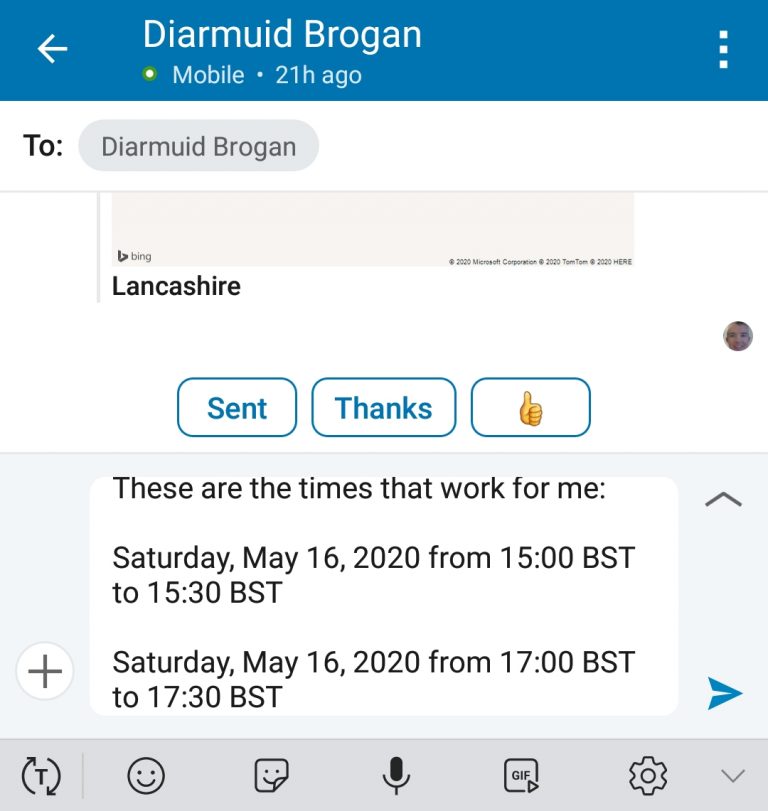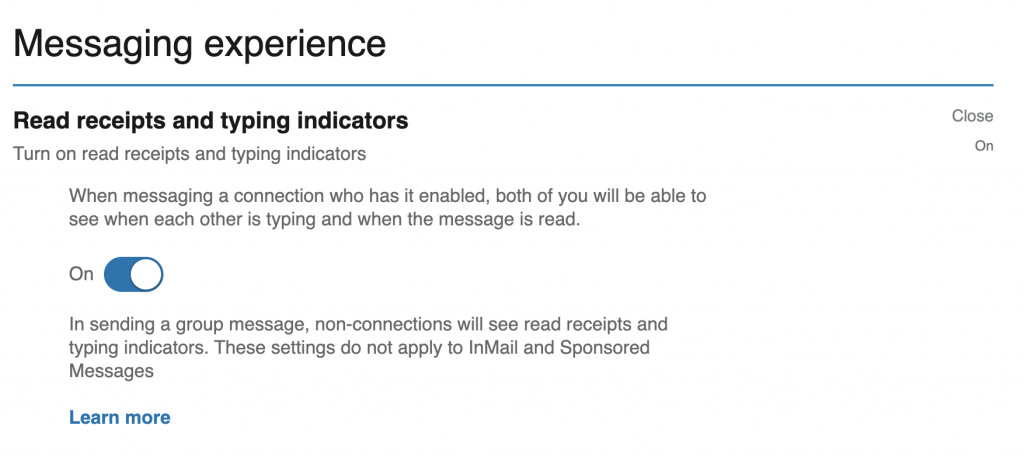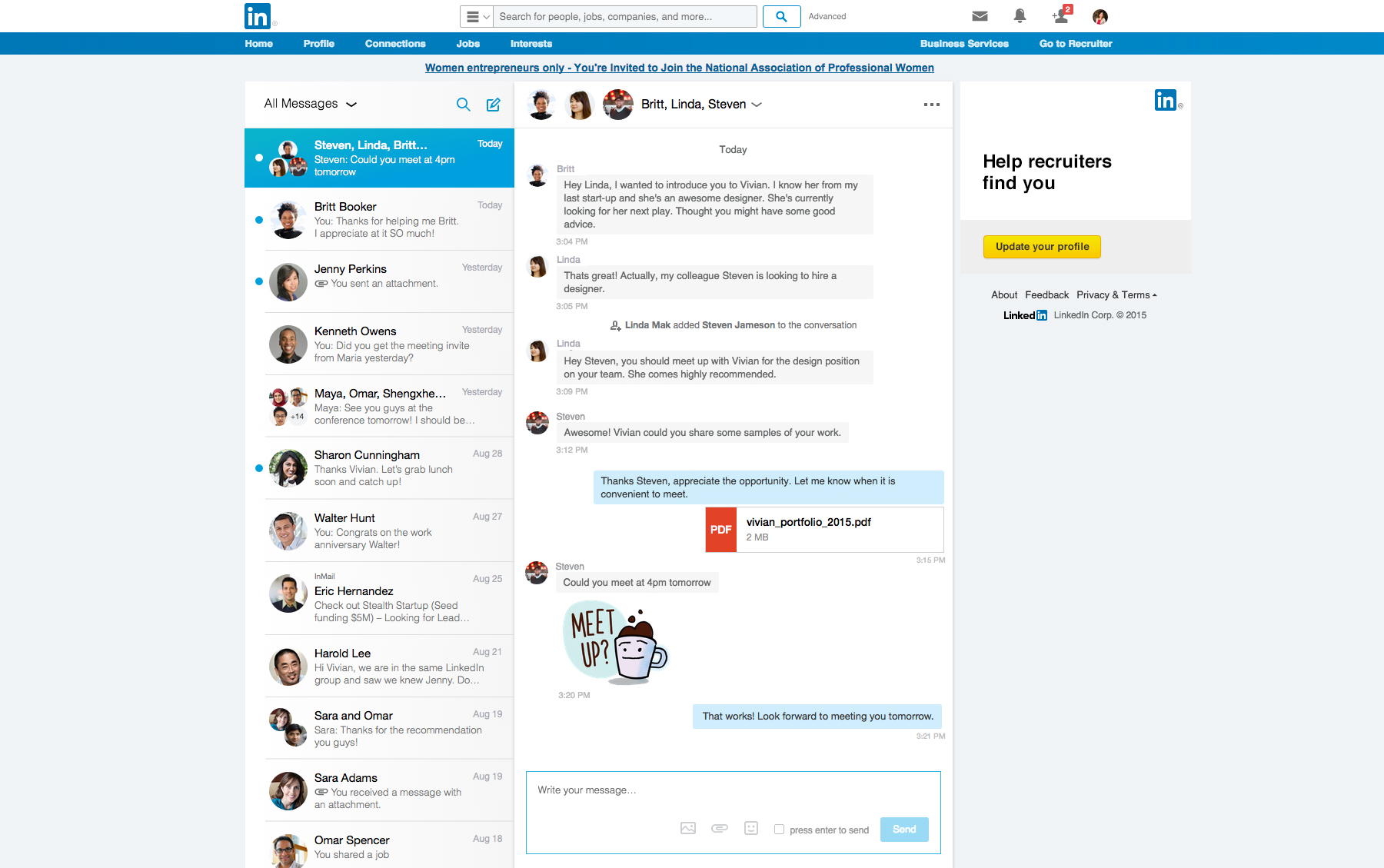LinkedIn is a powerful platform primarily designed for professional networking. One of its key features is the messaging system, which allows users to communicate directly with connections. But what if you don’t have a Premium account? Don’t worry! You can still get the most out of LinkedIn messaging without shelling out any extra cash. In this post, we’ll explore how to effectively use
Understanding LinkedIn Connection Requests

Making connections on LinkedIn is the first step to leveraging the platform effectively. Connection requests are essential to expanding your network, but they come with some etiquette and best practices that can make or break your success.
First, let's discuss what a connection request is. When you send a connection request, you’re asking another user to join your professional network. This can be a valuable way to gain access to new contacts, tap into different industries, and even discover new job opportunities. But remember: not every connection request is guaranteed to be accepted, especially if it comes off as impersonal or spammy.
Here are some tips for crafting effective connection requests:
- Personalize Your Message: Always include a personalized note when sending a connection request. Mention how you know the person or why you want to connect. This adds a human touch and increases your chances of acceptance.
- Be Clear About Your Intentions: Are you looking to collaborate, seek advice, or simply expand your network? Being clear about your intentions can help the other person understand why they should connect with you.
- Keep It Short and Simple: Busy professionals appreciate concise messages. Aim for a brief note that gets straight to the point while still sounding friendly and approachable.
Now, let's dive deeper into the types of connection requests you might encounter. There are essentially three types:
- Cold Requests: These are requests sent to people you’ve never met or had any prior communication with. Make sure to personalize these, as they’re more likely to be ignored if they seem generic.
- Warm Requests: These go to people you may have met at a conference, interacted with online, or share mutual connections with. Reference that commonality in your request to establish rapport.
- Alumni/Social Group Requests: Connect with fellow alumni or members of professional groups you belong to. This often creates an instant connection and shared background.
Finally, keep track of your connection requests. LinkedIn allows you to see who has accepted or ignored your requests, so you can follow up with personalized messages if needed. Doing so can help build a stronger relationship over time.
In conclusion, understanding how to effectively use connection requests on LinkedIn is crucial for enhancing your messaging experience and expanding your professional network. Personalization, clarity, and a respectful approach will go a long way in making meaningful connections on this platform.
Also Read This: How to Ask to Connect on LinkedIn: Writing the Perfect Message
3. Strategies for Messaging Non-Connections

Reaching out to non-connections on LinkedIn can be a bit tricky, especially if you're hoping to start a meaningful conversation. However, with the right strategies, you can increase your chances of getting a response without needing a premium account. Here are some effective tactics:
- Personalize Your Connection Requests: The first step is making your connection requests stand out. Instead of sending the default message, take a moment to personalize it. Mention a mutual connection, common interest, or something specific from their profile that intrigued you.
- Engage with Their Content: Before reaching out, consider engaging with the person's posts or articles. Like, comment, or share their content thoughtfully. This kind of engagement shows that you value their insights, and when you message them, you’ll be more recognizable.
- Use Shared Groups: If you belong to the same LinkedIn group as a non-connection, use that as a leverage point. Mention the group in your message. It adds a layer of familiarity and gives you a reason to connect.
- Be Concise and Clear: Keep your message brief and to the point. Busy professionals appreciate straightforward communication. Start with a friendly greeting, introduce yourself, and clearly state your intention for reaching out.
- Ask for Advice or Insights: People love sharing their expertise. Instead of making a sales pitch, consider asking for their opinion on a topic relevant to your industry. This not only opens the door for conversation but also reflects your respect for their knowledge.
By employing these strategies, you’ll be able to foster connections and increase your chances of meaningful interactions with those outside your immediate network. Remember, building relationships take time, so be patient and authentic in your approach.
Also Read This: How to Reach LinkedIn Support Without Logging In: Tips and Tricks
4. Using InMail Alternatives on LinkedIn

Although LinkedIn's InMail feature is exclusive to premium members and allows direct messaging to anyone on the platform, there are various alternatives you can utilize if you don’t have a premium account. Let’s explore some of these options!
- Connection Requests: As previously mentioned, sending personalized connection requests is one of the most effective ways to reach out. Once connected, you can message them freely. Focus on crafting a compelling reason for the connection — this can be an opportunity to discuss common interests or professional goals.
- Participate in Discussions: Engage in industry-specific discussions within LinkedIn groups or comment sections. By contributing your insights, you can attract attention and potentially prompt others to connect with you or message you after recognizing your name.
- Utilize LinkedIn Events: If there's an event that interests you, consider attending and connecting with other participants. You can network before, during, and after the event. Connecting afterwards can provide a solid reason to reach out.
- Comment on Their Articles: If the person you want to reach out to has published articles on LinkedIn, take the time to read them and leave thoughtful comments. This can lead to further conversation and make them more inclined to connect or interact with you.
- Leverage Your Network: Look for mutual connections who can introduce you to the non-connection you're interested in messaging. A warm introduction can significantly increase your chances of a response.
Taking advantage of these alternatives can enhance your LinkedIn experience, even without InMail. Building authentic connections is within your grasp, and with a little creativity and perseverance, you can expand your network effectively!
Also Read This: How to Withdraw a Job Application on LinkedIn Without Any Issues
5. Crafting Effective Messages to Capture Attention
Sending a message on LinkedIn can feel a bit like throwing a dart at a board from a distance—sometimes you hit the mark, and other times you don't. To improve your chances of capturing attention, let's dive into some effective messaging strategies!
1. Personalize Your Message
One of the biggest turn-offs in online communication is receiving a generic message. When you reach out, take a moment to mention something specific about the recipient. This could be a shared connection, a recent post they made, or something interesting from their profile. For example, instead of saying, "Hi, I’d like to connect," try, "Hi [Name], I loved your recent article on [Topic]. Your insights about [Specific Point] really resonated with me."
2. Get to the Point
Time is precious, especially in the professional world. Avoid lengthy introductions. Start with a strong opening and state your purpose clearly. A concise message that respects their time will always be appreciated. Try something like, “I’m reaching out to discuss potential collaboration opportunities between our companies.”
3. Use a Friendly Tone
Your message doesn’t have to sound too formal or stiff. A friendly and conversational tone makes you more approachable. Phrases like "I hope you're doing well!" or "I’d love to hear your thoughts on this!" can create a welcoming vibe that encourages responses.
4. Include a Call to Action
At the end of your message, include a clear call to action. Whether it’s a request for a coffee chat, phone call, or a simple question, giving your reader a next step can spark further conversation. For instance, “Would you be open to a quick chat next week?” is a simple yet effective way to invite engagement.
5. Keep It Professional
While it’s important to be friendly, remember that LinkedIn is a professional network. Maintain professionalism throughout your message. Watch your language, avoid slang, and keep emojis to a minimum. This shows that you value the platform and the relationship you’re trying to build.
Also Read This: What Does 3rd+ Mean on LinkedIn? Connection Levels Explained
6. Best Practices for Networking on LinkedIn
Networking on LinkedIn without a premium account is entirely possible with the right strategies. Here are some best practices to help you make meaningful connections:
- Complete Your Profile
A complete profile acts as your digital business card. Make sure to fill out all sections—profile photo, headline, summary, experience, and skills. A well-crafted profile makes you more appealing to potential connections. - Engage with Content
Don’t just scroll past posts; engage! Comment with thoughtful insights or share relevant articles. This not only boosts your visibility but also positions you as someone knowledgeable in your field. It paves the way for conversations with those in your network. - Join Relevant Groups
LinkedIn groups are a goldmine for networking. Join groups related to your industry or interests and participate in discussions. This is an excellent way to connect with like-minded individuals who share your professional passions. - Follow Up
If someone accepts your connection request, don’t let it fizzle out! Send a brief follow-up message expressing your gratitude and perhaps suggest a topic of conversation. This keeps the relationship active and encourages future interactions. - Be Genuine
Authenticity goes a long way. When networking, be yourself, and don’t try to fit into a mold. People connect with genuine individuals. Share your experiences, challenges, and what excites you about your work.
By implementing these strategies, you’ll be well on your way to building a robust professional network on LinkedIn, even without a premium account. Remember, it’s all about making meaningful connections and engaging in fruitful conversations.
Conclusion: Maximizing Your Messaging Potential on LinkedIn
In today's professional landscape, effective communication is paramount, and LinkedIn offers a unique platform for networking and building meaningful connections. While having a premium account certainly provides additional features, there are still numerous ways to maximize your messaging potential without it. Here are some key takeaways:
- Personalize Your Outreach: Always tailor your messages to suit the recipient. Reference mutual connections or shared interests to create a strong first impression.
- Leverage Connection Requests: A well-crafted connection request can lead to fruitful conversations. Keep your request concise, stating your intentions clearly.
- Utilize InMail Wisely: While this feature is exclusive to premium users, focus on engaging with your immediate connections and expanding your network organically.
- Be Active in Groups: Participate in LinkedIn groups relevant to your industry. Engaging in discussions can naturally lead to conversations via direct messaging.
Consider the timing of your messages; reaching out early in the week or around mid-morning can increase your chances of a response. Additionally, ensure that your profile is complete and professional, as this builds credibility and encourages people to respond to your messages.
Finally, don't be discouraged by limited messaging options. Embrace creativity and strategic thinking when reaching out. By building genuine relationships and engaging meaningfully on the platform, you can make the most of LinkedIn, regardless of whether you have a premium account.
 admin
admin








